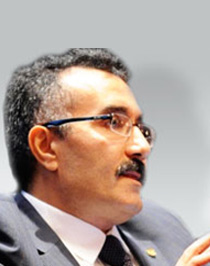New standards for M2M and the IoT

M2MAPPS: Can you summarize the ITU’s M2M and IoT activities as well as your role?
BILEL JAMOUSSI: M2M has been a communications success story, but there is a lot of work to be done on the standards front. M2M brings a whole new set of industry verticals into play and by fostering participation in various ITU study groups we are helping refine the standards needed to enable the smooth running of these applications. This work is grouped together under the Internet of Things Global Standards Initiative. Standards provide the common platforms needed to enable continued innovation and market development. Without them the full potential of M2M and the IoT cannot be realized. My role is that of Chief of the Study Groups Department at the Standardization Bureau in Geneva.
M2MAPPS: How did the ITU approach this challenge? It’s huge.
BILEL JAMOUSSI: It is huge but since its inception in 1865 the ITU has been facilitating industry consensus on communications technologies and standards. It’s a core competence. M2M, however, embraces players in fields that are not part of the ITU’s regular telecoms/ICT ecosystem, eHealth for example, so it was important to involve them from an early stage. When they become a member of the ITU these companies and organisations join our traditional industry members from the ICT sphere, governmental representatives and researchers from academia. This activity has been very successful, e.g. the Continua Health Alliance, the Bank of America, the Open Geospatial Consortium, EDRF and many more are on board.
M2MAPPS: How do you keep everybody on the same page? You’re talking about a very diverse community.
BILEL JAMOUSSI: Setting standards can be tricky, but in the case of M2M there are different regulatory requirements in the different verticals and there are also geographic variations. Coordination is a huge task but there is a well-trodden path with clear steps towards a fully functioning standards suite. Given its unique membership model and vast experience in this definition of the landscape and publication of the requisite protocols, ITU is the ideal place to forge standards.
M2MAPPS: What progress have you made? Have you announced any new standards?
BILEL JAMOUSSI: We now have consensus in two key areas. Recommendation ITU-T Y.2060 provides an overview of the IoT; it clarifies the concept and scope of IoT, identifies its fundamental characteristics and high-level requirements. Recommendation ITU-T Y.2061 provides an overview of machine-oriented communication (MOC) applications in next-generation network (NGN) environments. In addition ITU Y.2026 defines the functional requirements and architecture of the NGN for the support of ubiquitous sensor network applications and services. These first steps may seem to be modest, but they are critically important. They allow all the global players in the broad spectrum of activities and requirements to agree on the terminology and the basic requirements and that is no small feat. Moreover these and other Recommendations are needed before reference documentation can be created. This material is needed to enable an M2M environment that operates within the relevant regulator frameworks.
M2MAPPS: You mentioned eHealth as being a key vertical. What are you doing in this space?
BILEL JAMOUSSI: The challenges confronting increased development and widespread deployment of e-health solutions in many ways mirror those of the ICT industry as a whole. Universal accessibility is fundamental to enabling the world’s population to benefit from the full potential of e-health. The ITU is deeply involved in this sector and has close links to the World Health Organization (WHO), which is a sister UN organization, as well as organizations such as eDevice and the Continua Health Alliance. Every four years, the ITU hosts a Global Standards Symposium. This is a one-day event where ministers, regulators, heads of other international, regional and major national standards bodies, and industry representatives from the different regions of the world will discuss global ICT standards challenges. This year there will be a focus on the intersection of the ICT sector with vertical sectors such as e-health.
M2MAPPS: The last question. How would you summarize the Unions role? You’re covering a lot of ground.
BILEL JAMOUSSI: Standards matter and helping set them is the key role. They may not get pulses racing, but they have enabled and underpinned the two biggest machines in the world: the public wireline and wireless networks. The ITU is now engaged in developing enabling standards for an even bigger machine: the Internet of Things. It is hard to overstate the importance of M2M communications and the IoT. These closely related developments are already playing a significant role in both our professional and business lives.
Company: ITU – International Communication Union
The International Telecommunication Union is the United Nations specialized agency for information and communication technologies. We allocate global radio spectrum and satellite orbits, develop the technical standards that ensure networks and technologies seamlessly interconnect, and strive to improve access to ICTs to underserved communities worldwide. The ITU is committed to connecting all the world’s people – wherever they live and whatever their means. Through our work, we protect and support everyone’s fundamental right to communicate.
